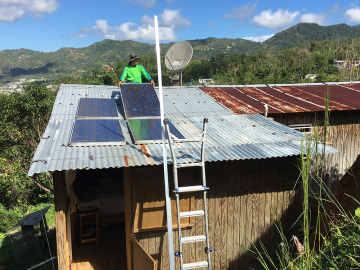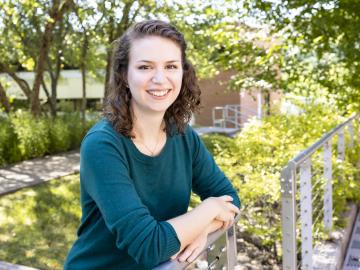
Filter News
Area of Research
News Type
Date
News Topics
- 3-D Printing/Advanced Manufacturing (4)
- Artificial Intelligence (1)
- Big Data (1)
- Bioenergy (10)
- Biology (9)
- Biomedical (2)
- Biotechnology (2)
- Buildings (6)
- Chemical Sciences (7)
- Clean Water (2)
- Composites (1)
- Computer Science (5)
- Coronavirus (2)
- Critical Materials (4)
- Cybersecurity (2)
- Energy Storage (11)
- Environment (14)
- Exascale Computing (1)
- Frontier (2)
- Fusion (1)
- Grid (5)
- High-Performance Computing (3)
- Hydropower (3)
- Irradiation (1)
- Isotopes (4)
- Machine Learning (3)
- Materials (9)
- Materials Science (2)
- Mathematics (2)
- Mercury (2)
- Microscopy (1)
- Nanotechnology (2)
- National Security (6)
- Neutron Science (7)
- Nuclear Energy (1)
- Physics (2)
- Polymers (2)
- Quantum Computing (4)
- Quantum Science (2)
- Security (1)
- Simulation (5)
- Transportation (10)
Media Contacts

Chemist Jeff Foster is looking for ways to control sequencing in polymers that could result in designer molecules to benefit a variety of industries, including medicine and energy.

A new report published by ORNL assessed how advanced manufacturing and materials, such as 3D printing and novel component coatings, could offer solutions to modernize the existing fleet and design new approaches to hydropower.

Scientists at ORNL developed a competitive, eco-friendly alternative made without harmful blowing agents.

Stephen Dahunsi’s desire to see more countries safely deploy nuclear energy is personal. Growing up in Nigeria, he routinely witnessed prolonged electricity blackouts as a result of unreliable energy supplies. It’s a problem he hopes future generations won’t have to experience.

ORNL researchers have identified specific proteins and amino acids that could control bioenergy plants’ ability to identify beneficial microbes that can enhance plant growth and storage of carbon in soils.

Benjamin Manard has been named to the editorial board of Applied Spectroscopy Practica, serving as an associate editor.

A tool developed by ORNL researchers gives building owners and equipment manufacturers and installers an easy way to calculate the cost savings of a heating and cooling system that utilizes geothermal energy and emits no carbon.

ORNL researchers Ben Ollis and Max Ferrari will be in Adjuntas to join the March 18 festivities but also to hammer out more technical details of their contribution to the project: making the microgrids even more reliable.

A DNA editing tool adapted by Oak Ridge National Laboratory scientists makes engineering microbes for everything from bioenergy production to plastics recycling easier and faster.

Alice Perrin is passionate about scientific research, but also beans — as in legumes.


